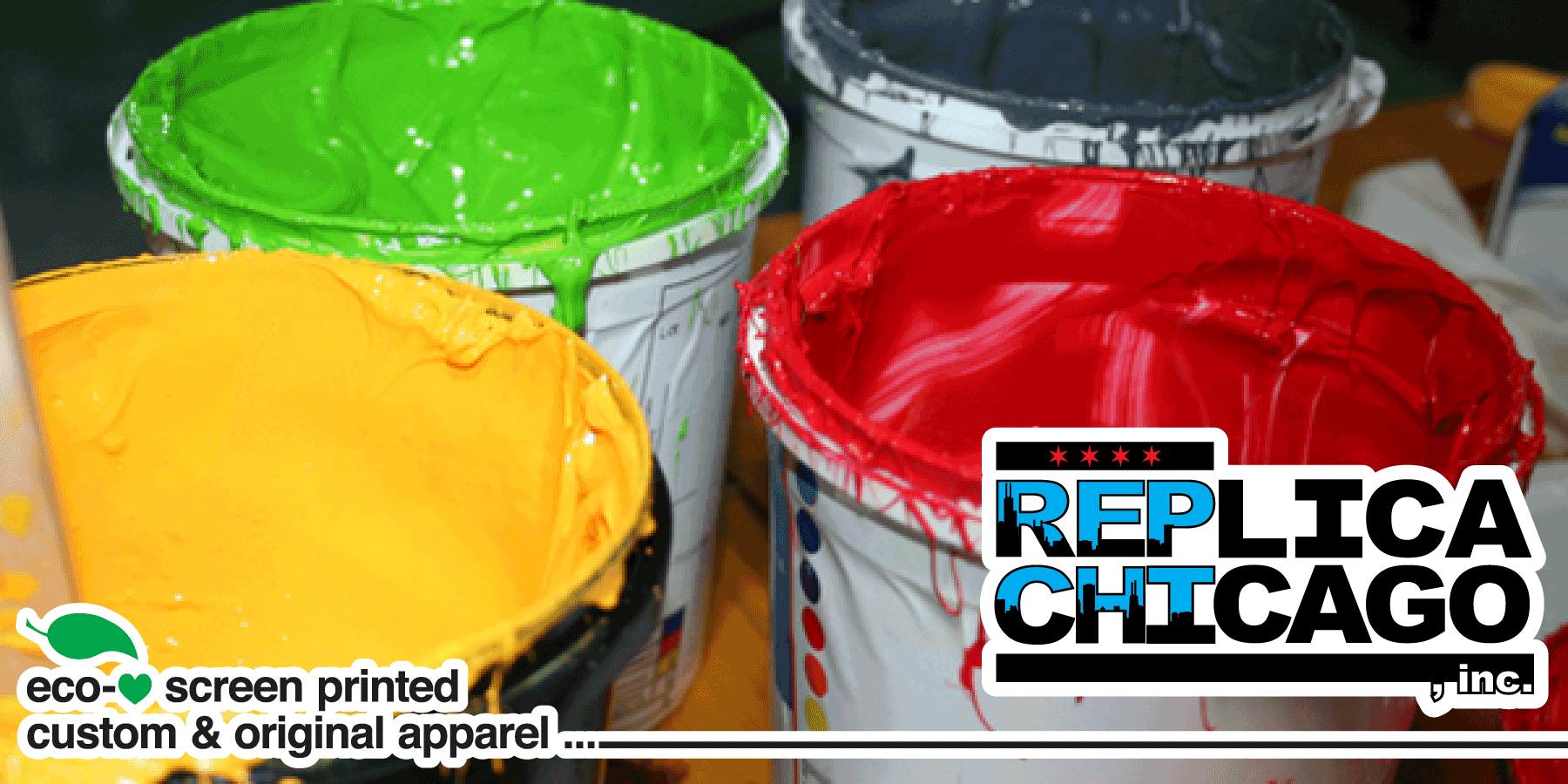Detailed Silk Screen Printing for Custom Art Apparel
Detailed Silk Screen Printing for Custom Art Apparel
Blog Article
Screen Printing Uncovered: Every Little Thing You Need to Learn About Tee and Garment Printing Methods
Display printing is an interesting method that integrates art with strategy, providing endless opportunities for creative thinking. Prepared to discover the important elements that make display printing an art kind?
The Fundamentals of Display Printing: How It Works
When you plunge into display printing, you'll find it's both a science and an art. At its core, display printing involves producing a stencil, or screen, that permits ink to pass with just in particular areas.
Following, you'll mix your inks and prepare your printing surface. Position the screen over the fabric, after that use a squeegee to press ink through the screen onto the garment. This procedure calls for accuracy, as you desire clear, dynamic prints. After printing, you'll treat the ink with warmth, ensuring it follows the textile and lasts via washes. Each step is vital, and understanding them will certainly elevate your screen printing skills, changing straightforward garments into special, meaningful items.
Kinds Of Display Printing Methods
As soon as you understand the fundamentals of display printing, it's time to discover the numerous techniques that can elevate your designs. One popular technique is typical display printing, where ink is pressed via a stenciled display. This technique is fantastic for vibrant, vibrant shades. Then there's water-based ink printing, which supplies a softer feel and is environment-friendly, however it needs a different approach to healing.
One more alternative is plastisol printing, known for its toughness and vivid colors, making it a favored for several brands. Experiment with halftone printing to produce slope impacts and detailed designs.
Essential Devices for Display Printing
To achieve magnificent results in display printing, having the right equipment is basic. You'll require a strong screen printing frame, which holds the mesh that moves your design onto the garment. Next off, invest in top quality squeegees; these are important for using ink uniformly across the screen.
Picking the Right Inks and Products
When choosing inks and materials for display printing, you need to take into consideration the kind of ink that works best for your task. Believe about material compatibility to assure your layouts look last and fantastic long. Also, explore environmentally friendly ink options to make your printing process more lasting.
Kinds Of Screen Inks
Choosing the appropriate screen ink is important for accomplishing dynamic, sturdy prints that meet your job's needs. There are several kinds of screen inks to examine. Plastisol ink is popular for its flexibility and ease of usage, supplying outstanding shade opacity on dark materials. Water-based ink, on the other hand, uses a softer feel and is green, making it perfect for those looking to decrease their ecological influence. Discharge inks get rid of dye from the material, leading to a soft, classic appearance but require particular handling. Specialized inks, such as glow-in-the-dark or metal, can add special results to your layouts. Assess your project needs and select the ink that aligns ideal with your preferred result.

Material Compatibility Considerations
Comprehending material compatibility is vital for achieving top notch screen prints, especially given that various materials react uniquely to different inks. Always test your inks on example material to ensure they stick correctly and keep shade stability. Furthermore, keep in mind that material weight and structure can impact the final end result, so selecting the ideal ink and material combo is vital for your job's success.
Eco-Friendly Ink Options
Green inks are becoming a preferred choice for display printers who desire to decrease their environmental impact while maintaining quality. When picking inks, take into consideration water-based inks, which are less harmful and less complicated to clean up compared to standard solvents.
In addition, look for inks made from renewable energies, such as soy or vegetable-based choices. By selecting the ideal inks and products, you'll not only create magnificent styles but likewise add to a much more lasting printing procedure. Make the button, and your prints will show your dedication to the environment!
Preparing Your Style for Screen Printing

Submit Format Needs
To assure your design looks sharp and vibrant on textile, you'll need to pay close attention to submit layout demands for display printing. Make sure your style has a transparent history to protect against undesirable white edges on your prints. Maintain shade settings in mind; CMYK is standard for display printing, so convert your RGB designs as necessary.
Color Separation Strategies
Shade splitting up is a vital step in preparing your layout for display printing, and understanding it can greatly boost your print quality. You'll require to damage your style into private shades, as each color needs a different display throughout printing. This accuracy not just ensures accurate color depiction however likewise improves the printing procedure.
Resolution and Size
Achieving the very best lead to screen printing begins with ensuring your style has the right resolution and size. Preferably, your artwork should be at the very least 300 DPI (dots per inch) for sharp, clear prints. If you make use of lower resolution, your end product may look pixelated and amateur.
When it involves size, take into consideration the dimensions of your print location. Design your artwork to match the final print dimension, ideally developing it in the real measurements you'll be printing. In this manner, you'll stay clear of any unforeseen scaling concerns.
Constantly examine your layout in both vector and raster layouts. Vector graphics can be scaled without shedding quality, making them excellent for screen printing. Preparing appropriately will ensure your design looks outstanding on every garment!
Step-by-Step Screen Printing Process
Screen printing is a dynamic procedure that enables you to develop vivid styles on various surfaces. To obtain begun, you'll need screen printing kit a screen, emulsion, and your selected ink. Initially, prepare your display by cleaning it extensively. Next off, apply the emulsion evenly and allow it completely dry in a dark area. Once dry, subject your display to light with your layout positioned on it, which will certainly harden the solution where the light hits, producing a stencil - screen printing kit.
After washing out the unexposed solution, your display prepares. Establish it up on your printing surface area and straighten your garment underneath it. Put ink onto the screen and use a squeegee to press the ink with the pattern onto the textile. Raise the screen very carefully and allow the print completely dry. Lastly, heal the ink making use of warmth to guarantee resilience. That's it! You've efficiently screen printed your style.
Tips for Effective Display Printing Projects
While you're diving right into your display printing jobs, bear in mind that preparation is essential to success. Begin by collecting all your products-- inks, displays, garments, and mops. A clean workspace aids protect against unwanted mistakes, so clean up prior to you begin.
Following, confirm your art work is high-resolution and appropriately sized for your garment. Examine your display for correct direct exposure and tidy it thoroughly to prevent smudges. When blending your inks, adhere to the supplier's guidelines to accomplish the appropriate consistency.
Throughout printing, use also pressure with your squeegee for consistent outcomes. Don't hurry; take your time to validate each print satisfies your criteria. After printing, allow your garments dry completely before handling or packaging them.
Last but not least, always keep a sample of your benefit future reference. In this manner, you can analyze your progress and enhance your techniques over time. Pleased printing!

Regularly Asked Inquiries
How much time Does It Take to Establish a Display Printing Work?
Establishing up a display printing work usually takes about 30 minutes to an hour. You'll prepare the displays, mix inks, and readjust the press. The time varies based on intricacy and experience, so stay arranged!
Can I Publish on Different Material Keys In Using the Same Method?
Yes, you can print on different material kinds utilizing the very same method, however you'll require to readjust your inks and setups. Some fabrics soak up ink in different ways, so exploring warranties the most effective results for every product.
What Are Common Blunders to Prevent in Display Printing?
When display printing, stay clear of common mistakes like making use of the incorrect ink, disregarding correct exposure times, or missing pre-press checks. Always examine your configuration and maintain tidy screens to ensure high quality results each time.
How Can I Appropriately Tidy and Maintain My Display Printing Equipment?
To correctly tidy and maintain your display printing devices, you need to routinely wash displays with appropriate solvents, check mops for wear, and ensure all devices are saved dry and dust-free. Consistency improves and protects against pricey repairs performance.
Is Screen Printing Eco-friendly Compared to Various Other Methods?
Display printing can be extra environmentally friendly than other techniques, especially if you use eco-conscious materials and water-based inks. By choosing sustainable products and methods, you minimize waste and lessen your influence on the planet.
Display Printing Uncovered: Whatever You Need to Know About Tee and Garment Printing Strategies
At its core, display printing entails developing a stencil, or display, that permits ink to pass via only in certain areas. Position the screen over the material, after that use a squeegee to push ink with the display onto the garment. One popular method is conventional screen printing, where ink is pressed with a stenciled screen.When selecting inks and materials for display printing, you require to take right into account the type of ink that functions finest for your project.
Report this page